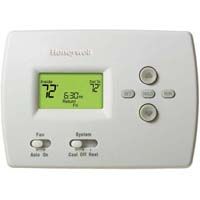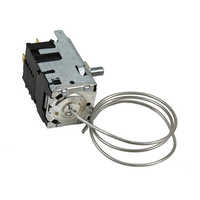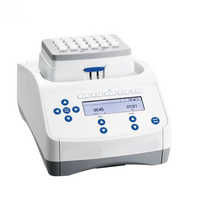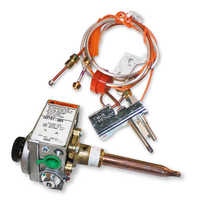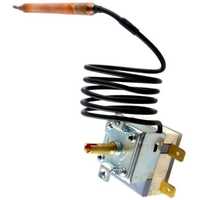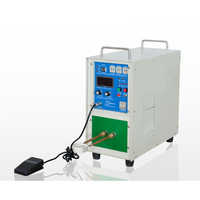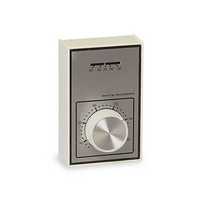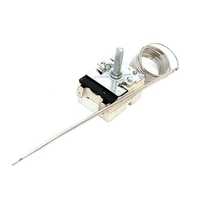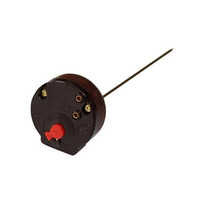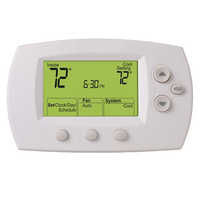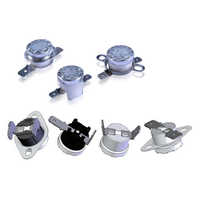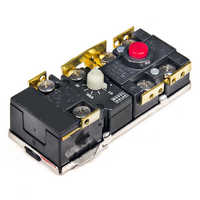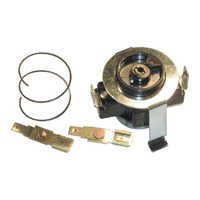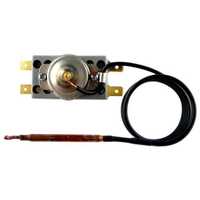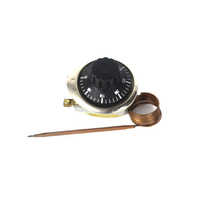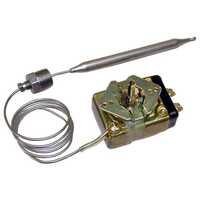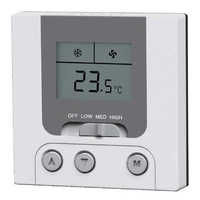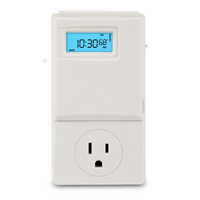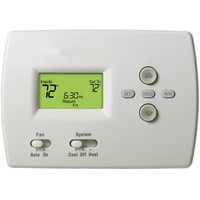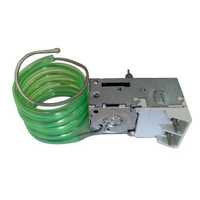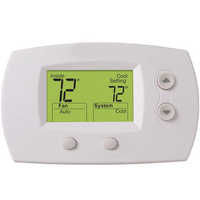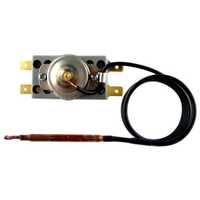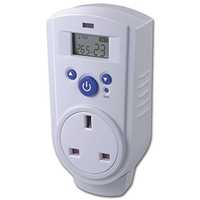Thermostatic Bimetals & Thermostats
(553 products)
Related Categories
Abrasives
Acoustic Products
Acrylic Sheets
Air Blowers
Air Compressors & Air Separation Plants
Air Cooler
Air Dryers
Air Receiver
Air Valves
Aluminum Castings
Anchors
Anti Vibration Mounts
Ball & Roller Bearings
Ball Valves
Ballast Making Machines
Bearing Parts & Components
Bearings
Bellows & Expansion Joints
Belt Pulleys
Boilers, Components & Spares
Bolts
Bright Bars
Bristles
Burners/Industrial Burners & Incinerators
Bushings & Bushing Parts
Butterfly Valves
CNC Machined Components
Cable Pulleys
Capital Goods
Carbon & Graphite Products
Castor Wheels
Centrifugal Pumps
Centrifuges
Ceramics
Chains & Chain Link Fence Fittings
Cleaning Equipment
Clips, Clamps
Coils
Combustion Equipment
Compression Springs
Compressors & Allied Equipment
Control Valves
Conveyor & Conveyor/Industrial Belts
Cooling Tower & Chilling Plants
Coupling
Cranes
Cryogenic Equipment
Cutting Tools, Broaches & Cutters
Departmental Shelving
Diaphragm Valves
Die Castings
Dies & Moulds
Dies,Jigs,Fixtures
Diesel Engine & Electric Locomotive Spares
Draught Fan
EOT Cranes
Electric Hoists
Electric Motors & Engines
Electroplating Chemicals & Equipment
Energy Management System
Engine Valves
Engineering Goods & Equipment
Engineering Plastics
Engraving Equipment
Extruded Profiles
Fasteners
Fiberglass Products
Filter Cartridges & Media
Filter Cloth, Filter Industrial
Filters-Air, Gas, Liquid
Filtration & Sedimentation Units
Flat Metal Processing Equipment
Float Valves
Fork Lift Truck Parts
Fork Lift Trucks
Forklifts
Foundry Raw Material & Equipment
Furnace Manufacturers
Galvanized Fasteners
Gantry Cranes
Gaskets
Gate Valves
Gauges & Gauge Glasses
Gear Boxes, Reduction Gears & Gear Cutting
Girder Cranes
Glass & Glass Products
Glass Cutting Tools/Glass Cutters
Globe Valves
Goliath Cranes
Grating
Hand & Allied Tools
Hand Pump
Hardware & Tools
Heat Exchangers
Heating Elements
Hex Bolts
Hex Nuts
Hooks & Mounts
Hoses
Hot Air Oven
Humidification & Ventilation Equipment
Hydraulic Hoses & Flexible Metal
Hydraulic Press
Hydraulic Press Brakes
Hydraulic Products & Equipment
Hydraulic Valves
Induction Heating Equipment
Industrial Automation
Industrial Brakes
Industrial Brushes
Industrial Clothing
Industrial Clutches
Industrial Cylinders
Industrial Dryers
Industrial Evaporators
Industrial Knives
Industrial Nets
Industrial Ovens
Industrial Rollers
Industrial Supplies Stocks
Industrial Supplies-General
Industrial Tape
Industrial Tools
Industrial Valves
Industrial Vibrator
Inspection Equipment
Instrumentation
Internal Combustion Engine
Jib Cranes
Laboratory Furniture
Laboratory Glassware & Equipment
Laundry Equipment
Lined Valves
Machine Tools Accessories
Marking Systems
Material Handling Equipment
Measuring Tools & Equipment
Mechanical Seals
Metallised Capacitor Films
Mining Equipment
Mining, Exploration & Drilling Machinery
Model Making Materials
Motor Couplings
Moulded Components
Moulds
Needle Valves
Needles
Nuts
Oil Seals
Outdoor Cooling Systems
Overhead Cranes
PVC Hoses
PVC Products
Paint Brushes
Painting Equipments & Maintenance
Perforated Sheets
Plastic Processing Machinery Parts
Plastic Valves
Plastic Welding Equipment
Plate Valves
Plug Valves
Pneumatic Products & Tools
Pneumatic Valves
Polish & Polishing Material/Machinery
Power Press
Precision Brass Components
Pressed Components
Pressure Gauges
Pressure Vessels
Pulleys
Pulverizers
Pump Spares Parts
Pumps & Pumping Equipment
Radiators
Refrigeration & Equipment
Rope Pulleys
Rope,Twines & Webbings
Ropes
Rotary Valves
Rubber & Rubber Products
Rubber Gaskets
Rubber Roller
Rubber Seals
Rubber Transmission Belts
Screws
Seals
Sensors & Transducers
Shaft Couplings
Shafts & Shaft Collars
Sheet Metal Components & Parts
Solenoid Valves
Springs
Stainless Steel Bolts
Stainless Steel Fasteners
Stainless Steel Nuts
Stainless Steel Valves
Storage Systems
Storage Tanks
Submersible Pumps
Surface Finishing Equipment
Synthetic Industrial Diamonds
Thermostatic Bimetals & Thermostats
Trolleys & Carts
Tungsten Carbide
Ultrasonic Equipment
V-Belts
Vacuum Equipment & System
Valves
Valves Fittings
Vibrating Screen
Washers
Water Coolers
Weighbridge
Welding & Soldering Supplies
Welding Electrodes
Welding Equipment
Winches
Wire Drawing Dies
Wire Rope Hoists
Wire Ropes
Explore More Categories
Indian Inquiries Only
Blue Honeywell Ys-Slf4-Pn16-0065 Y- Strainer
Price: 4500 INR (Approx.)/Unit
MOQ - 1 Unit/Units
Weight - 0.2KG Kilograms (kg)
Color - Blue
Size - DN65 (65MM)
2 Years
Business Type: Distributor | Trading Company
The Refrigeration House
AFFORDABLE ORIGINAL Nest Learning Thermostat T3007ES 3rd Generation
Price: 31000 INR (Approx.)/Unit
MOQ - 2 Unit/Units
Color - Black
Size - 3.3 x 3.3 x 1.21 inches
3 Years
Business Type: Manufacturer | Exporter
ELGI Equipments Limited
Burners Thermostat
Price: 300.00 - 800.00 INR (Approx.)/Piece
MOQ - 100-200 Piece/Pieces
15 Years
Business Type: Manufacturer | Distributor
FLAMCO COMBUSTIONS (P) LTD.
Copper Bimetallic Strips
Price: 850 INR (Approx.)/Kilograms
MOQ - 50 Kilograms/Kilograms
Material - Copper
17 Years
Business Type: Manufacturer | Distributor
LINK ELECTRICALS (INDIA)
Indian Inquiries Only
Programmable Honeywell Thermostat
Price: 2050 INR (Approx.)/Number
MOQ - 1 Number
4 Years
Business Type: Distributor | Trading Company
ZERO AIRCON TECHNOLOGIES
Two Connectors Thermostat
Price: 0.20 - 0.50 USD ($) (Approx.)/Piece
MOQ - 1000 Piece/Pieces
8 Years
Business Type: Manufacturer | Exporter
KUOYUH W. L. ENTERPRISE CO., LTD.
Bimetallic Strip Application: Industrial
Color - Red Brown, Golden Yellow
Product Type - Bimetallic Strip
Application - Industrial
6 Years
Business Type: Manufacturer | Distributor
SHREE METAL INDUSTRIES
Indian Inquiries Only
Flameproof Temperature Switches Application: Industrial
Price: 6600 INR (Approx.)/Piece
MOQ - 1 Piece/Pieces
Product Type - Flameproof Temperature Switches
Usage - in hazardous working conditions where dealing with gases, hydraulics power and lubricants is common
Color - Blue
10 Years
Business Type: Manufacturer | Supplier
SMART TECH INSTRUMENTS AND CONTROLS
T Type Thermocouple Application: Industrial
MOQ - 1 Piece/Pieces
Product Type - T Type Thermocouple
Color - Silver
Material - Stainless Steel
9 Years
Business Type: Manufacturer | Exporter
ELMEC HEATERS & CONTROLLERS
Mts Combistat Application: Geysers
MOQ - 50 Piece/Pieces
Product Type - Thermostat
Size - 7/9/11 Inch
Usage - Industrial
2 Years
Business Type: Manufacturer | Supplier
K H INDIA
Indian Inquiries Only
Silver Digiterm S-150 Immersion Thermostat With Digital Control
MOQ - 1 Piece/Pieces
Product Type - Digiterm S-150 Immersion Thermostat With Digital Control
Color - Silver
Usage - Industrial & Commercial
2 Years
Business Type: Service Provider | Trading Company
AGG LIFESCIENCES AND SAFETY SOLUTIONS LLP
Indian Inquiries Only
Indian Inquiries Only
Bimetal Sheet 3mm*30mm*600mm
Price: 1280 INR (Approx.)/Milligram
MOQ - 1 Milligram/Milligrams
8 Years
Business Type: Distributor | Exporter
ALL INDIA METAL CORPORATION
White Honeywell Digital Thermostat
MOQ - 1 Piece/Pieces
Usage - Commercial & Industrial
Color - White
Product Type - Honeywell Digital Thermostat
2 Years
Business Type: Trading Company
BOTHRA ELECTRIC & REFRIGERATION CO.
Industrial Elcon Capillary Thermostat
Price: 200 INR (Approx.)/Piece
MOQ - 6 Piece/Pieces
3 Years
Business Type: Manufacturer | Trading Company
KIRAN WIRE CO.
Indian Inquiries Only
Silver Thermostat Ksd 9700
Price: 75 INR (Approx.)/Piece
MOQ - 100 Piece/Pieces
Product Type - Thermostat Ksd 9700
Usage - Industrial
Color - Silver
2 Years
Business Type: Manufacturer | Exporter
ZENTRIAD
Aluminum Copper Non Tension Bimetallic Joints
Price: 50.00 - 70.00 INR (Approx.)/Piece
MOQ - 500 Piece/Pieces
Size - 16-240 sq/mm
Product Type - Bimetallic Connectors
Usage - Electrical
2 Years
Business Type: Manufacturer | Distributor
POWER TECH (INDIA)
Black Swift Thermostat Housing
Price: 600 INR (Approx.)/Piece
MOQ - 100 Piece/Pieces
Usage - Commercial
Color - Black
Product Type - Swift Thermostat Housing
Business Type: Manufacturer | Distributor
Red Diamond Enterprises
Indian Inquiries Only
H7711 Modulating Thermostat Application: Industrial
Price: 5368 INR (Approx.)/Unit
MOQ - 1 Unit/Units
Product Type - H7711 Modulating Thermostat
Size - Different Size
Color - White
Business Type: Supplier | Trading Company
Sai Flow Technologies
85 Degree Elcon Gold Capillary Thermostat Application: Industrial
Price: 875 INR (Approx.)/Unit
MOQ - 10 Unit/Units
Color - Black
Product Type - 85 Degree Elcon Gold Capillary Thermostat
Usage - Industrial
2 Years
Business Type: Manufacturer | Trading Company
GLOBAL INDUSTRIAL HEATERS
Medium Temperature Controller Application: Industrial
Price: 305000.00 INR (Approx.)/Unit
MOQ - 1 Unit/Units
Product Type - Medium Temperature Controller
Usage - To Control Temprature
Material - Metal
16 Years
Business Type: Manufacturer | Exporter
MATSUI TECHNOLOGIES INDIA LTD.
65 Degree Thermostat Wire Application: Industrial
Price: 190 INR (Approx.)/Piece
MOQ - 100 Piece/Pieces
Product Type - Thermo state with wire
Size - Fix
Color - Silver
2 Years
Business Type: Trading Company
Shivansh Enterprises
Golden Lightweight Iron Thermostat
Price: 13 INR (Approx.)/Piece
MOQ - 50 Piece/Pieces
Product Type - Lightweight Iron Thermostat
Color - Golden
Usage - Industrial
2 Years
Business Type: Manufacturer | Trading Company
Ssj Products India
Thermostatic Bimetals & Thermostats Manufacturers | Suppliers in India
| Company Name | Location | Member Since |
|---|---|---|
| Link Electricals (India) | Delhi, India | 17 Years |
| Matsui Technologies India Ltd. | Greater Noida, India | 16 Years |
| Flamco Combustions (P) Ltd. | New Delhi, India | 15 Years |
| Futuristic Technologies | Ahmedabad, India | 14 Years |
| Volga Freeze | Vadodara, India | 12 Years |
| P. R. Shah & Co. | Mumbai, India | 11 Years |
| Smart Tech Instruments And Controls | Vapi, India | 10 Years |
| Elmec Heaters & Controllers | Chennai, India | 9 Years |
| Elektrikals & Ceramics | Bengaluru, India | 9 Years |
| Kuoyuh W. L. Enterprise Co., Ltd. | Taipei, Taiwan | 8 Years |
The History of Thermostats and Their Evolution to Smart
How Does Thermostat Work?
When exposed to temperature fluctuations, bimetallic strips take too long to heat up or cool down, limiting their responsiveness. An alternate thermostat design utilizes a pair of metal discs separated by gas-filled bellows to detect temperature changes more rapidly.
Thermostat Features
Benefits Of Thermostat
Simply by swiping your finger over the screen, you may set your smart thermostat to reduce HVAC use while you're at work.
Log in to your thermostat app and modify the cooling and heating timetable for the day if you plan on arriving home early and want it to be at the ideal temperature. While away on vacation, you may adjust the temperature settings on your air conditioner to keep the house at a more comfortable temperature. If you want to cut costs without sacrificing comfort, use these suggested temperatures.
FAQs: Thermostat
Related Categories
Related Categories
Abrasives
Acoustic Products
Acrylic Sheets
Air Blowers
Air Compressors & Air Separation Plants
Air Cooler
Air Dryers
Air Receiver
Air Valves
Aluminum Castings
Anchors
Anti Vibration Mounts
Ball & Roller Bearings
Ball Valves
Ballast Making Machines
Bearing Parts & Components
Bearings
Bellows & Expansion Joints
Belt Pulleys
Boilers, Components & Spares
Bolts
Bright Bars
Bristles
Burners/Industrial Burners & Incinerators
Bushings & Bushing Parts
Butterfly Valves
CNC Machined Components
Cable Pulleys
Capital Goods
Carbon & Graphite Products
Castor Wheels
Centrifugal Pumps
Centrifuges
Ceramics
Chains & Chain Link Fence Fittings
Cleaning Equipment
Clips, Clamps
Coils
Combustion Equipment
Compression Springs
Compressors & Allied Equipment
Control Valves
Conveyor & Conveyor/Industrial Belts
Cooling Tower & Chilling Plants
Coupling
Cranes
Cryogenic Equipment
Cutting Tools, Broaches & Cutters
Departmental Shelving
Diaphragm Valves
Die Castings
Dies & Moulds
Dies,Jigs,Fixtures
Diesel Engine & Electric Locomotive Spares
Draught Fan
EOT Cranes
Electric Hoists
Electric Motors & Engines
Electroplating Chemicals & Equipment
Energy Management System
Engine Valves
Engineering Goods & Equipment
Engineering Plastics
Engraving Equipment
Extruded Profiles
Fasteners
Fiberglass Products
Filter Cartridges & Media
Filter Cloth, Filter Industrial
Filters-Air, Gas, Liquid
Filtration & Sedimentation Units
Flat Metal Processing Equipment
Float Valves
Fork Lift Truck Parts
Fork Lift Trucks
Forklifts
Foundry Raw Material & Equipment
Furnace Manufacturers
Galvanized Fasteners
Gantry Cranes
Gaskets
Gate Valves
Gauges & Gauge Glasses
Gear Boxes, Reduction Gears & Gear Cutting
Girder Cranes
Glass & Glass Products
Glass Cutting Tools/Glass Cutters
Globe Valves
Goliath Cranes
Grating
Hand & Allied Tools
Hand Pump
Hardware & Tools
Heat Exchangers
Heating Elements
Hex Bolts
Hex Nuts
Hooks & Mounts
Hoses
Hot Air Oven
Humidification & Ventilation Equipment
Hydraulic Hoses & Flexible Metal
Hydraulic Press
Hydraulic Press Brakes
Hydraulic Products & Equipment
Hydraulic Valves
Induction Heating Equipment
Industrial Automation
Industrial Brakes
Industrial Brushes
Industrial Clothing
Industrial Clutches
Industrial Cylinders
Industrial Dryers
Industrial Evaporators
Industrial Knives
Industrial Nets
Industrial Ovens
Industrial Rollers
Industrial Supplies Stocks
Industrial Supplies-General
Industrial Tape
Industrial Tools
Industrial Valves
Industrial Vibrator
Inspection Equipment
Instrumentation
Internal Combustion Engine
Jib Cranes
Laboratory Furniture
Laboratory Glassware & Equipment
Laundry Equipment
Lined Valves
Machine Tools Accessories
Marking Systems
Material Handling Equipment
Measuring Tools & Equipment
Mechanical Seals
Metallised Capacitor Films
Mining Equipment
Mining, Exploration & Drilling Machinery
Model Making Materials
Motor Couplings
Moulded Components
Moulds
Needle Valves
Needles
Nuts
Oil Seals
Outdoor Cooling Systems
Overhead Cranes
PVC Hoses
PVC Products
Paint Brushes
Painting Equipments & Maintenance
Perforated Sheets
Plastic Processing Machinery Parts
Plastic Valves
Plastic Welding Equipment
Plate Valves
Plug Valves
Pneumatic Products & Tools
Pneumatic Valves
Polish & Polishing Material/Machinery
Power Press
Precision Brass Components
Pressed Components
Pressure Gauges
Pressure Vessels
Pulleys
Pulverizers
Pump Spares Parts
Pumps & Pumping Equipment
Radiators
Refrigeration & Equipment
Rope Pulleys
Rope,Twines & Webbings
Ropes
Rotary Valves
Rubber & Rubber Products
Rubber Gaskets
Rubber Roller
Rubber Seals
Rubber Transmission Belts
Screws
Seals
Sensors & Transducers
Shaft Couplings
Shafts & Shaft Collars
Sheet Metal Components & Parts
Solenoid Valves
Springs
Stainless Steel Bolts
Stainless Steel Fasteners
Stainless Steel Nuts
Stainless Steel Valves
Storage Systems
Storage Tanks
Submersible Pumps
Surface Finishing Equipment
Synthetic Industrial Diamonds
Thermostatic Bimetals & Thermostats
Trolleys & Carts
Tungsten Carbide
Ultrasonic Equipment
V-Belts
Vacuum Equipment & System
Valves
Valves Fittings
Vibrating Screen
Washers
Water Coolers
Weighbridge
Welding & Soldering Supplies
Welding Electrodes
Welding Equipment
Winches
Wire Drawing Dies
Wire Rope Hoists
Wire Ropes
